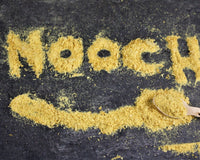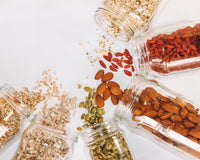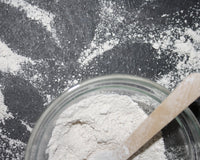Chia seeds are one of the world's most popular superfoods, they are constantly
trending amongst wellness groups, and their versatility means you can add them
into pretty much any recipe for a powerful nutritional boost. However for the
uninitiated, chia seeds can be an intimidating ingredient to start using, here we’ll
break down exactly what they are, how to use them and most importantly their
incredible health benefits.
What are chia seeds
Chia seeds are small edible seeds from the mint family, originating from South
America, they have a subtle nutty, almost bitter taste and are small and oval shaped.
Historically chia seeds were cultivated by both mayans and Aztecs, forming a key
aspect of their diets, due to their use as a long lasting energy source, and they remain
just as popular today!
As chia seeds have such a subtle flavour, they can be used in both sweet and savoury
recipes, but they are arguably most popular in smoothies and milkshakes.
What makes chia seeds a superfood
There are a few main characteristics of chia seeds that make them so nutritionally
incredible, but perhaps most importantly is their status as a complete protein. A
complete protein means that a food source has all nine vital amino acids that the
body needs, but cannot produce. Chia seeds hold a unique position, as typically
complete proteins can be hard to find outside of animal sources, which makes them
harder to come by for those on a vegan or plant based diet.
On top of their impressive collection of amino acids, chia seeds are also rich in omega
3 fatty acids, which are crucial for both brain and heart health. Chia seeds are also
packed full of fibre (with just two tablespoons providing roughly 9.8 grams of dietary
fibre) this makes chia seeds a great way to improve your digestion and reduce
inflammation. Similarly chia seeds contain a great multitude of antioxidants, which
can help protect against inflammation, diabetes and even heart disease.
The amazing health benefits of chia seeds
As you might have guessed from their incredible nutritional makeup, chia seeds have
another type of nutrient that can be incredibly hard for those on plant based diets to
accrue, but it is incredibly important for our health. Not only do omega 3 fatty acids
keep our brains and hearts healthy, they are also critical to maintaining good
eyesight, and a healthy immune system. In particular chia seeds are rich in
alpha-linolenic acid, a specific type of omega 3, which has been shown to reduce the
risk of heart disease.
The high fibre content of chia seeds we previously mentioned, is another source of
their excellent health benefits. The fibre in chia seeds lowers bad cholesterol and
triglycerides, while simultaneously increasing heart protective cholesterol. Alongside
this, fibre intake has been shown to reduce the risk of heart disease, type two
diabetes, inflammation and digestive issues.
Alongside these health benefits, chia seeds are also a unique tool for weight loss and
appetite management. Because of their high fibre content, chia seeds are excellent at
absorbing water, which means when they are in the stomach they form a gel like
substance that helps to satiate appetite, reduce cravings and lower caloric intake.
How to get the most out of chia seeds
Chia seeds are an incredibly versatile ingredient, so it can be a little overwhelming to
try to understand all of its uses, here we’ll show you exactly how to get the most from
your chia seeds no matter what you want to use them for. You can also simply eat chia
seeds straight from the packet as a snack, and avoid the need for any particular prep
or research.
One of the most common questions when using chia seeds is whether or not you
should soak them before adding them to a drink or using them in a recipe, but it
really depends on what you are using them for. The best way to decide whether you
want to soak your chia seeds or not, is to decide on the texture you would like from
them. If you are looking to add a slight crunch to salads, smoothies, cereals or
porridge then it is best to simply sprinkle the chia seeds onto them before serving.
However if you are looking to create a creamier final result, like chia pudding then
you’ll need to soak the chia seeds with a ratio of roughly 1 tablespoon of chia seeds to
¼ of a cup of liquid.
In regards to nutrition, it is generally better to soak the chia seeds to improve the rate
at which the nutrients are absorbed, and generally make them easier to
digest.Similarly if you’re looking to use chia seeds as a weight loss tool, soaking them
will provide a better result.
As you increase your intake of chia seeds, it is hugely important to make sure you are
increasing your water consumption alongside it, not only will this allow you to get
the most benefits from it, but it will also make sure that the vast amounts of fibre in
chia seeds don’t cause any short term digestive issues.
Why you need to include chia seeds in your diet
incorporating chia seeds into your diet, whether you’re looking to improve your heart
health, digestion or protein intake, they really can do it all. By varying how you use
them in recipes, or as a snack you can make sure you never get bored of them, and
once you start making them a staple ingredient in your pantry you’ll really notice the
difference. If after reading this article you’re still unsure on how exactly you want to
use chia seeds, we have plenty of great recipes, including this delicious goji berry and
chia smoothie so don’t hesitate to get started!






